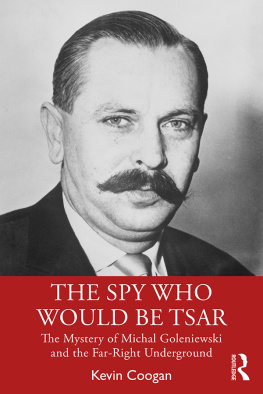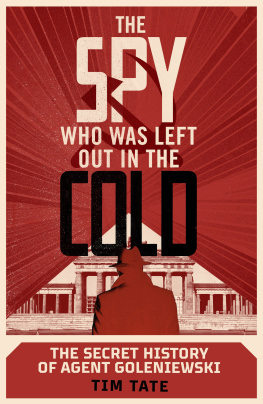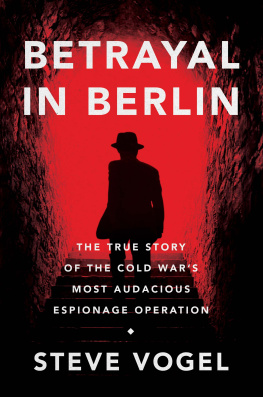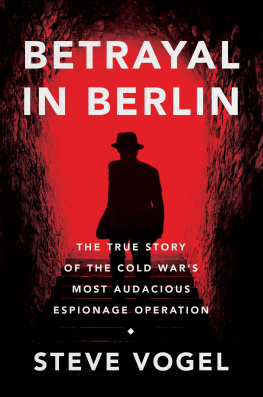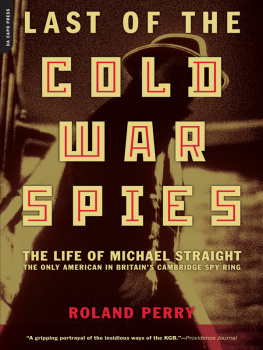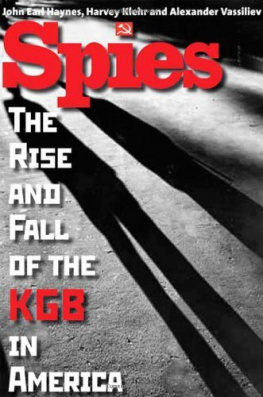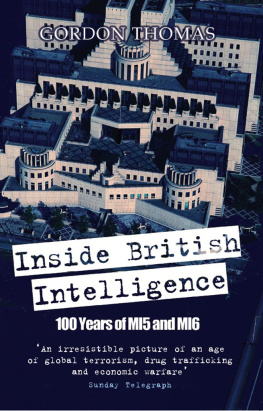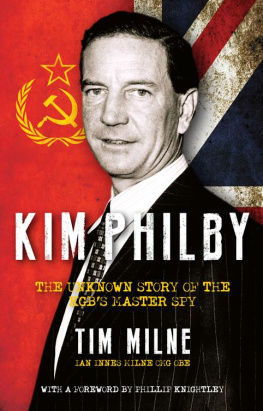The Spy Who Would Be Tsar
Michal Goleniewski was one of the Cold Wars most important spies but has been overlooked in the vast literature on the intelligence battles between the Western Powers and the Soviet Bloc. Renowned investigative journalist Kevin Coogan reveals Goleniewskis extraordinary story for the first time in this biography.
Goleniewski rose to be a senior officer in the Polish intelligence service, a position which gave him access to both Polish and Russian secrets. Disillusioned with the Soviet Bloc, he made contact with the CIA, sending them letters containing significant intelligence. He then decided to defect and fled to America in 1961 via an elaborate escape plan in Berlin. His revelations led to the exposure of several important Soviet spies in the West including the Portland spy ring in the UK, the MI6 traitor George Blake, and a spy high up in the West German intelligence service. Despite these hugely important contributions to the Cold War, Goleniewski would later be abandoned by the CIA after he made the outrageous claim that he was actually Tsarevich Alexei Nikolaevich of Russia the last remaining member of the Romanov Russian royal family and therefore entitled to the lost treasures of the Tsar. Goleniewskis increasingly fantastical claims led to him becoming embroiled in a bizarre demi-monde of Russian exiles, anti-communist fanatics, right-wing extremists and chivalric orders with deep historical roots in Americas racist and antisemitic underground.
This fascinating and revelatory biography will be of interest to students and researchers of the Cold War, intelligence history and right-wing extremism as well as general readers with an interest in these intriguing subjects.
Kevin Coogan was a veteran investigative journalist. His previous books include Dreamer of the Day: Francis Parker Yockey and the Postwar Fascist International (1999).
First published 2022
by Routledge
2 Park Square, Milton Park, Abingdon, Oxon OX14 4RN
and by Routledge
605 Third Avenue, New York, NY 10158
Routledge is an imprint of the Taylor & Francis Group, an informa business
2022 Ellen Coogan
The right of Kevin Coogan to be identified as author of this work has been asserted by him in accordance with sections 77 and 78 of the Copyright, Designs and Patents Act 1988.
All rights reserved. No part of this book may be reprinted or reproduced or utilised in any form or by any electronic, mechanical, or other means, now known or hereafter invented, including photocopying and recording, or in any information storage or retrieval system, without permission in writing from the publishers.
Trademark notice: Product or corporate names may be trademarks or registered trademarks, and are used only for identification and explanation without intent to infringe.
British Library Cataloguing-in-Publication Data
A catalogue record for this book is available from the British Library
Library of Congress Cataloging-in-Publication Data
Names: Coogan, Kevin, author.
Title: The spy who would be tsar : the mystery of Michal Goleniewski and the far-right underground / Kevin Coogan.
Description: Abingdon, Oxon ; New York, NY : Routledge, 2021. | Includes bibliographical references and index.
Identifiers: LCCN 2020057013 (print) | LCCN 2020057014 (ebook) | ISBN 9780367506636 (hardback) | ISBN 9780367506650 (paperback) | ISBN 9781003051114 (ebook)
Subjects: LCSH: Goleniewski, Michal, 1922-1993. | Intelligence service--Poland. | Cold War. | Spies--Poland--Biography. | Defectors--Poland--Biography. | Defectors--United States--Biography. | Right-wing extremists--Biography.
Classification: LCC DK4435.G65 C66 2021 (print) | LCC DK4435.G65 (ebook) | DDC 327.124380092 [B]--dc23
LC record available at https://lccn.loc.gov/2020057013
LC ebook record available at https://lccn.loc.gov/2020057014
ISBN: 978-0-367-50663-6 (hbk)
ISBN: 978-0-367-50665-0 (pbk)
ISBN: 978-1-003-05111-4 (ebk)
DOI: 10.4324/9781003051114
I had been interested in the strange pseudo-chivalric Shickshinny Knights for many years. In the early 1980s, a friend and I drove to Shickshinny and met Charles Pichel. We simply knocked on his door. It was around three in the afternoon. Pichel, a very old man, was in his pyjamas watching TV. We chatted for a bit and then left. If Charles Pichel were a secret master of the universe, he disguised his role brilliantly. The only thing I really remember about the encounter was that Pichel had displayed an award from some rightist group in Asia in his living room.
My interest in the Knights led me to the fantastic tale of Michal Goleniewski. I had known about Goleniewski as a minor character in books on the CIA and James Jesus Angleton in particular. That fact alone aroused my curiosity. Why did a top Eastern Bloc defector suddenly declare he was the Tsar of Russia? I was also acquainted with the writer Peter Tompkins. A former member of the wartime intelligence organization, the Office of Strategic Services (OSS), Tompkins wrote exotic books about the secret history of the pyramids and the hidden life of plants. Tompkins had met Goleniewski. He told me that he didnt think Goleniewski was the Tsar, but that he could be very convincing in person.
A few years ago, I first heard about Leszek Pawlikowiczs 2004 book Tajny Front Zimnej Wojny: Uciekinierzy z Polskich Suz.b Specjalnych 19561964 (Secret Front of the Cold War: Refugees from the Polish Special Services 19561964). Pawlikowiczs study of Cold War defectors was made possible by the opening up of Polish intelligence service archives to qualified scholars. Pawlikowicz included a long section on Goleniewski in his study.
I then took the 7 subway train seven stops until I reached one of the most remarkable institutions in the world, the Central Research Division of the New York Public Library on 42nd Street and Fifth Avenue. Naturally, Pawlikowiczs book was in its incredible collection. Without that book and that library, I would never have attempted, much less written, The Spy Who Would Be Tsar.
As far as I know, my book is the first scholarly study of Goleniewski, although I draw on both Guy Richards and Pierre de Villemarests earlier portraits. As part of that study, I also turned to the librarians and archivists at Boston University, who graciously helped guide me through the relevant sections of the Edward Jay Epstein and Tennent Bagley collections.
The research for the book led me down many strange rabbit holes. For that reason, I am eternally grateful for Professor Michael Hagemeisters help. One of the worlds leading experts on the history of the Protocols of the Elders of Zion, Professor Hagemeisters advice (along with his own published studies) proved invaluable. I am most grateful, however, to my editor Craig Fowlie for his friendship and his willingness to take a chance on a slightly eccentric Yank.
After writing a book about such compulsive shapeshifters as spies, I hope this book will help open a new conversation about Goleniewski as there is clearly much more to be learned. For this reason, I would like to conclude by especially thanking whoever declassified (I suspect mistakenly) Goleniewskis January 1960 Sniper letter, which proved so invaluable for my research.
Kevin Coogan, New York City, February 2020
Notes
As I was finalising sending this manuscript to the publisher, I became aware of a forthcoming book on Goleniewski by the British journalist Tim Tate. We have had no contact with each other so these should be regarded as entirely separate parallel investigations. Tates book is listed as forthcoming in my bibliography.

